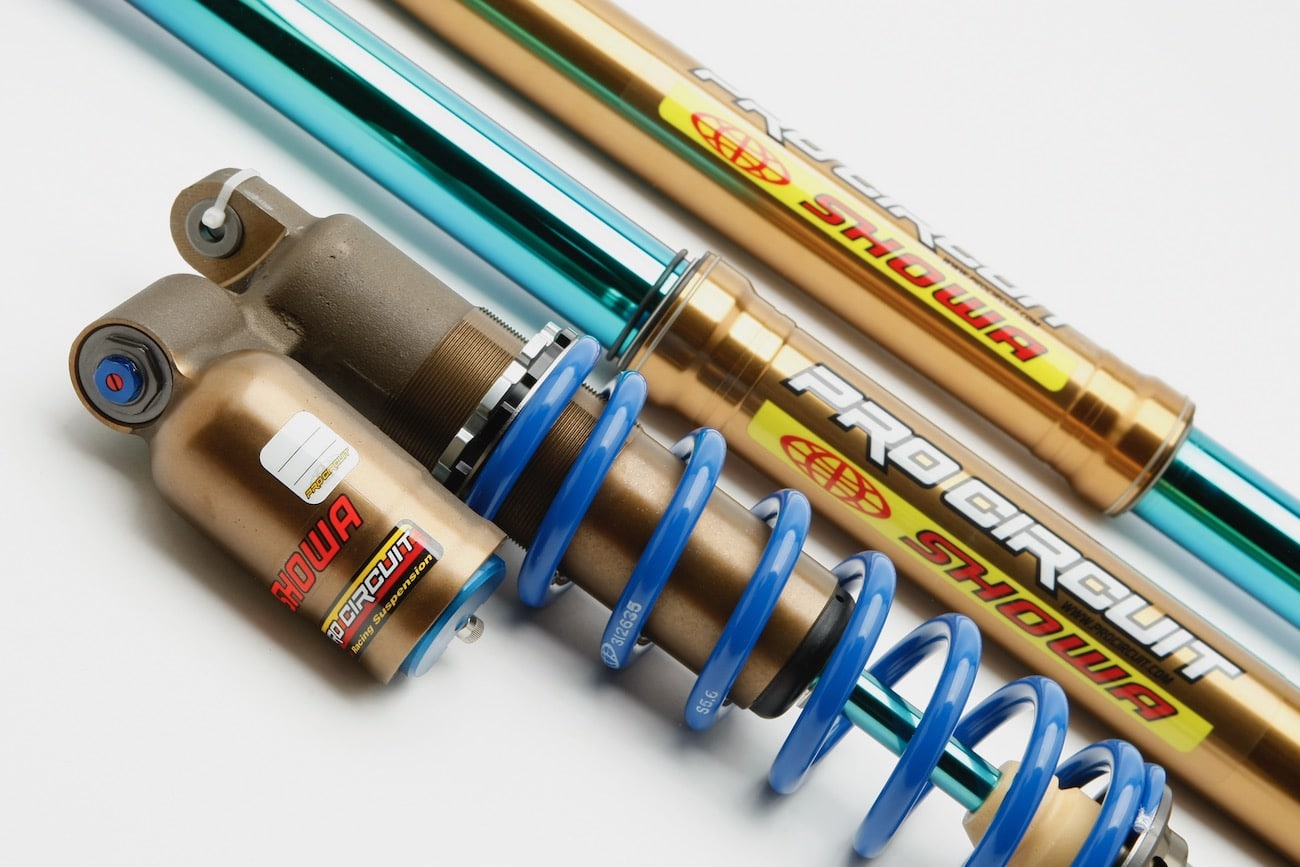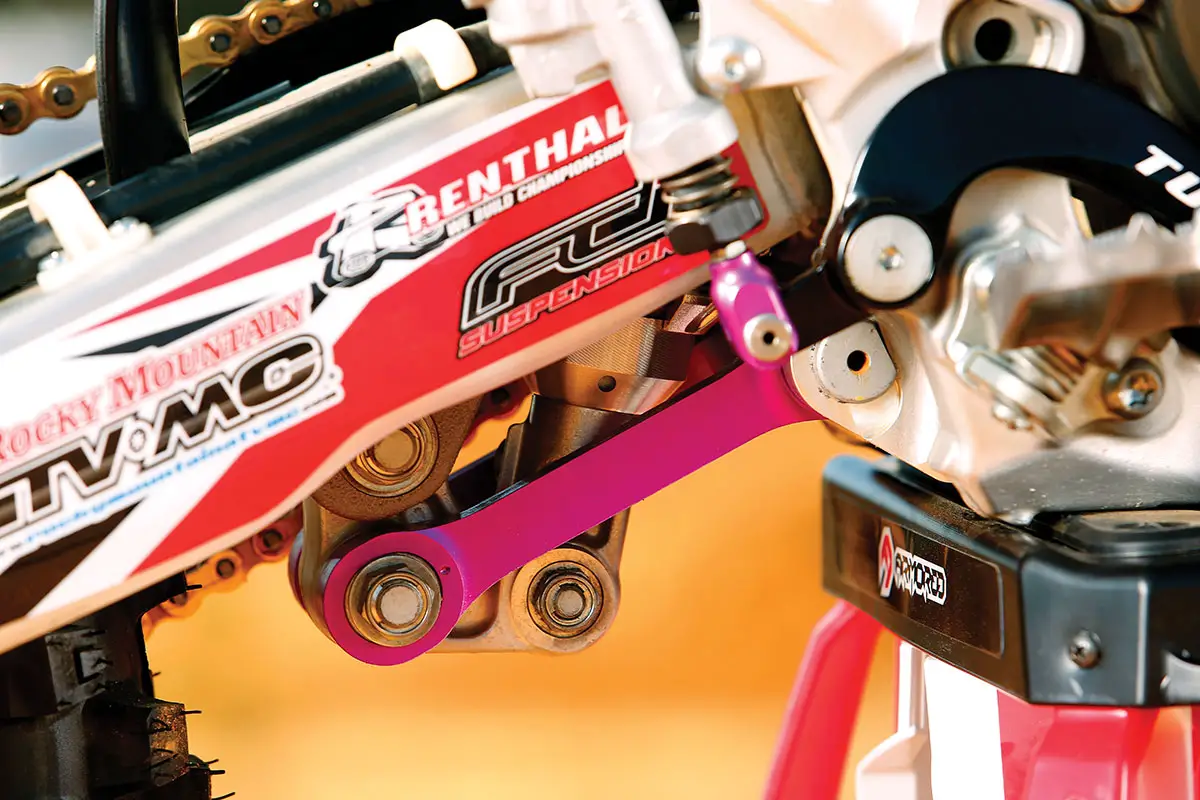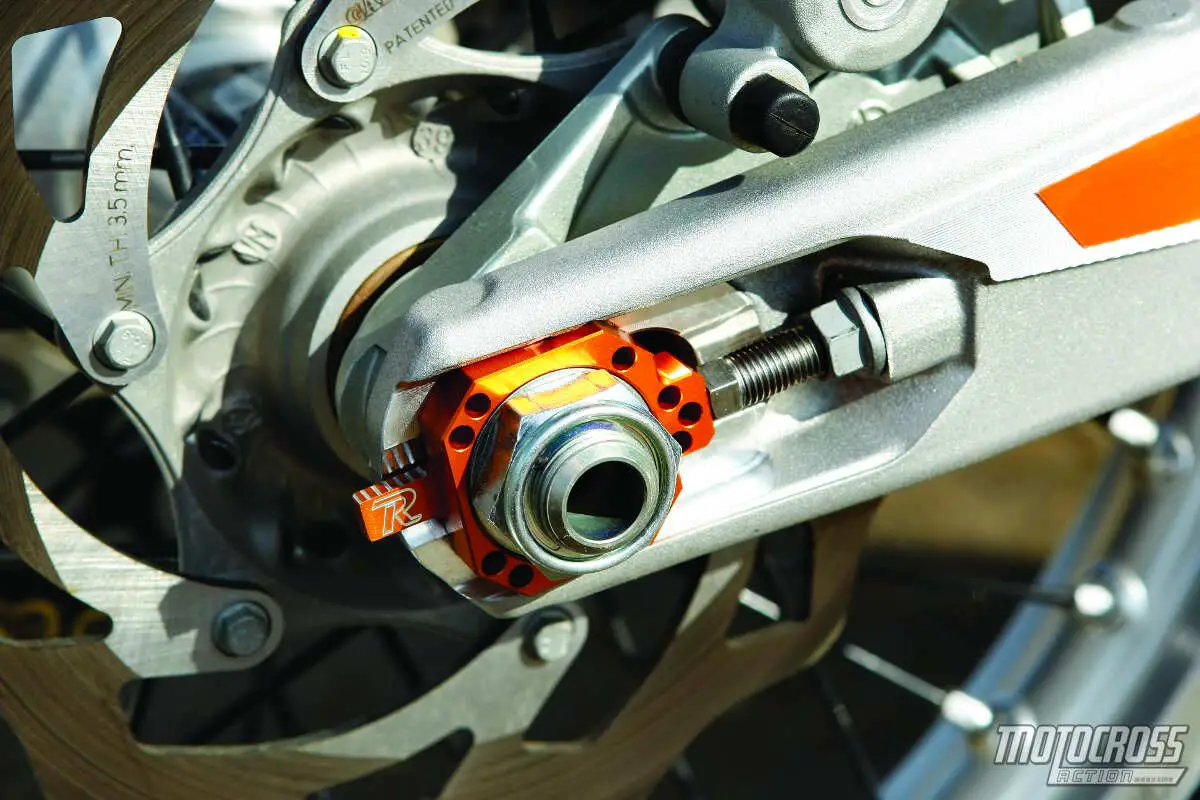TEN THINGS YOU NEED TO KNOW ABOUT SUSPENSION SETUP
(1) Race sag. Setting sag is the one thing that every rider thinks he can do, but normally does wrong. Here are some tips: First, do not measure the sag with the rider standing up. Sit down. Second, bounce on the suspension before measuring. Third, sit where you actually ride, not some dream position that you think looks impressive. Fourth, measure from the exact same place every time.It doesn’t matter where you measure from as long as you measure from the same spot—and can discern the difference in the sag. KTM, Husqvarna, Kawasaki and GasGas want their race sag measure almost straight up, other manufacturers (Honda, Yamaha and Suzuki) suggest measuring in line with the arc of the wheel.
(2) Static sag. Static sag is a measurement of how much the bike sags under its own weight. Static sag can only be checked after race sag is set. Static sag should be between 30mm and 40mm on big bikes. If you have more than 40mm of static sag, your shock spring is too stiff. Less than 30mm and your spring is too soft.
(5) Tire pressure. Lots of suspension problems are caused by incorrect tire pressure. If your suspension or handling feels funny, go back to the pits and check your tire pressure. Too much pressure makes the suspension stiff and too little makes the bike wallow and push.
(8) Axle bind. It is critical that your front axle not bind in the fork legs. Most modern front axles accept a 19mm Allen socket. Buy one. When installing the front wheel, just hold the nut with a wrench and turn the axle with the 19mm Allen. Once you have the axle tight, tighten the fork dropout’s pinch bolts. By spinning the axle in, instead of spinning the nut on, you guarantee that the axle is not bound up in the dropouts.








Comments are closed.